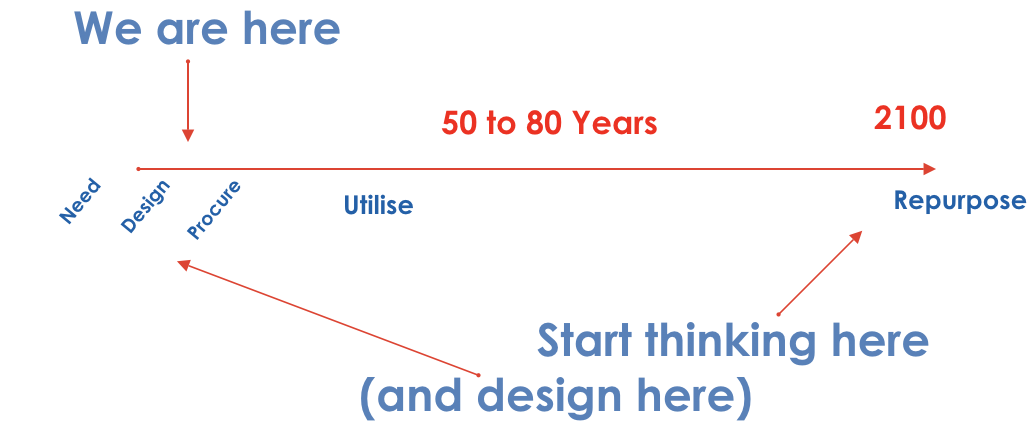IS Thought Leadership: Peter Mulherin | Sustainable Procurement
IS Thought Leadership: Sustainable Procurement
Today we see rapidly changing dynamics as border and transport challenges increase, forcing a greater focus on local source suppliers and governments become more nationalistic.
Infrastructure procurement is increasingly being used as a mechanism to raise local industry content and capability together with delivering social and environmental outcomes. Businesses that innovate, collaborate and demonstrate leadership in this regard will enjoy growth as governments, financiers and the public increase demands for accountability.
Procurement decisions by corporations can have a profound impact through informing and creating demand and also delivering longitudinal impact to communities and society more generally.
The way money is spent is the most challenging and revealing of activities and, when informed, these decisions have the potential to influence the design and utility for suppliers of products and services. The decision of procurement has an impact for better or worse, backward through the supply chain and perhaps even more importantly forward through the longitudinal performance and utility, lifecycle and ultimately recovery or waste of the resources involved. The commitment of funds represents a point of reference and demonstration of the personnel and processes of the corporation and a reflection of the values it holds.
If we are to meet national commitments, corporate declarations and individual aspirations for Sustainable Development Goals we will need greater action in policy direction, strategic decisions and at the moment of procurement commitments. Today more than ever procurement decisions will determine the achievement of success and growth of corporations or their demise.
Of relevance are the words of Mark Carney, Governor of the Bank of England who observed that “companies that don’t adapt will go bankrupt without question.” He added; “There will be great fortunes made along this path aligned with what society wants.” And “ The more we invest with foresight; the less we will regret in hindsight”.
Corporations are faced with these risks and opportunities in their procurement decisions and those that embrace this foresight will find new clients and markets for their services. One prominent approach with countless successful case studies is the adoption of the principles of circularity; designing out waste in products and processes over the lifecycle, extending the longevity of utilisation through making repairs and maintenance more timely and cost effective, and building regenerative systems in harmony with nature. This approach will help integrate our infrastructure into, upon and around us by considering species habitat, climate change, topography and support to rural and indigenous communities.
For example traditionally a tunnel that transits from A to B in the most direct route for low initial cost may win approval; however, an alternative approach may be one where the route follows a mineral body from which resources may be extracted and materials used in the fabrication of tunnel walls, or for use in other works. This may create shared value in collaboration with miners, emerging technologies in low/utilised carbon materials and in the extraction process, which offsets the cost of tunnelling. One option creates waste and another creates valued by-products for aligned industry and while the route may be longer this is of little consequence with the advent of electric, driverless and autonomous transport systems.
We may also ask; does our infrastructure design consider these new modes of transport? Are we building roads to fix todays congestion and creating debt, cost and liabilities or are we building enduring and resilient intergenerational mobility systems for the common wealth?
Public and private infrastructure spend is of particular importance given the large up front investment in procurement. This is addressed by understanding the longitudinal opportunity through design, and for extended utilisation and resource recovery.
Those businesses that adapt and find new value propositions to existing challenges will prosper. When businesses see waste they may equally see wealth; tunnel spoil may be seen as a financial liability or it may be allocated as a social and sustainability asset by delivering research, new jobs and value streams. Previously obscure waste streams such as office stationary by-products, e-waste and organics may be utilised for longitudinal utility, immediate socially impacting occupations, and for research, learning and teaching case studies and career paths. At the same time that our resources are becoming more limited, we must imagine new business models, social outcomes and circularity principles.
Australia has committed hundreds of billions of dollars to infrastructure spend across defence, civil, health and education. More recently hundreds of billions more has been committed to support social cohesion, job retention and industry support where longitudinal outcomes may be expected. The opportunity for corporates who respond to current government commitments through their procurement decisions will, in response, have implications for future generations. The impact of decisions made today extend beyond the life of many of those involved. Defence materiel takes a long view, looking ahead at least five decades, public transport infrastructure thinks ahead well into the later half of this century. This means that spending today must meet zero carbon commitments or risk building in liabilities, which increase the need for offsets and further drawdown of emissions.
Procurement decisions today create assets or liabilities for our children’s generations, and beyond.
Figure.1

One dollar today may create a liability of ten or an asset recurring in value through design.Those leaders and spenders of corporate funds, who help drive down social and environmental costs can expect to be rewarded, hope to be respected, and perhaps even remembered!
If you would like submit a thought leadership piece, our topic in April is ‘Sustainable Precurement’. For more information on submission guidelines, click here.

